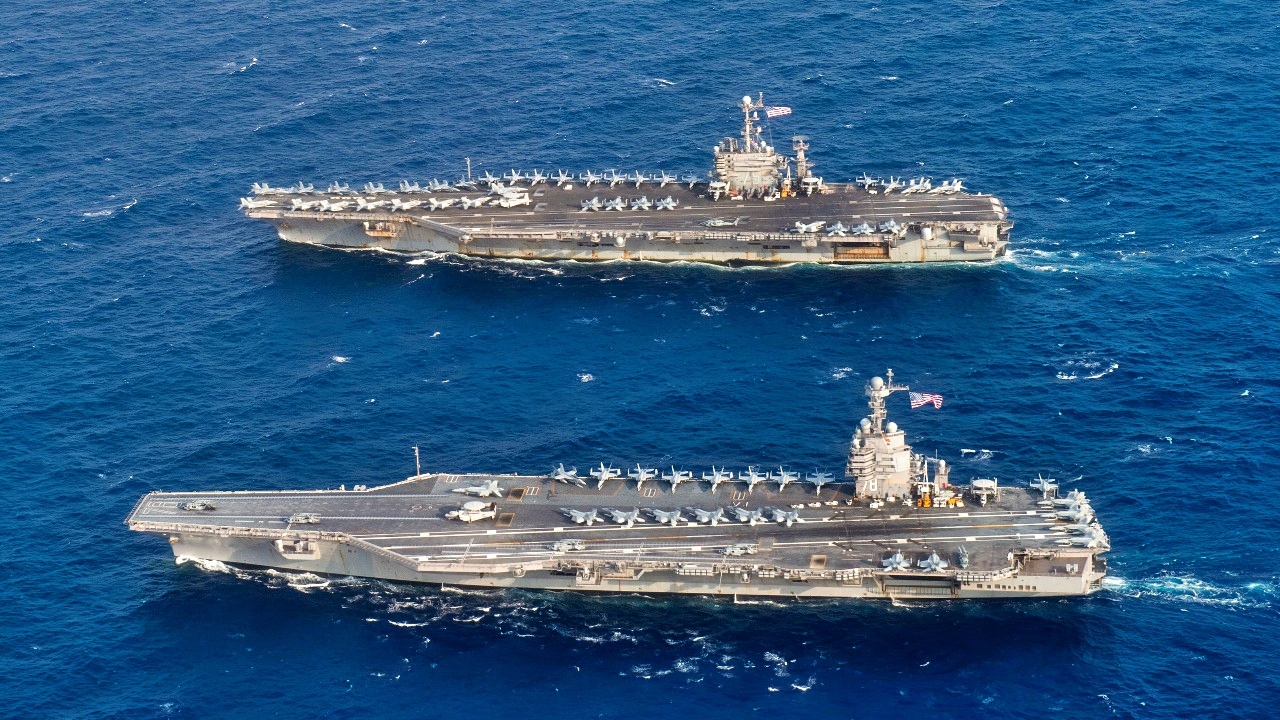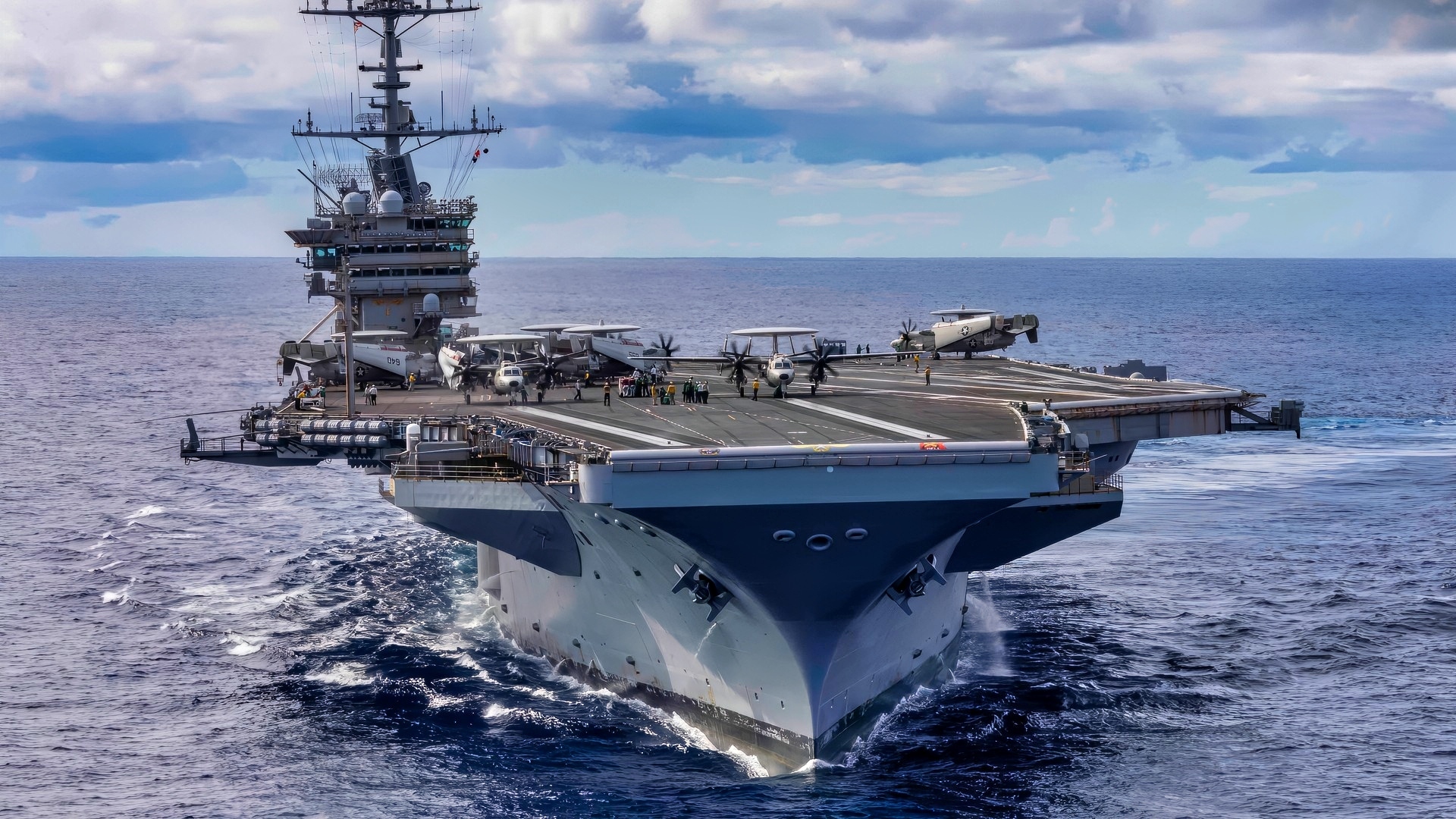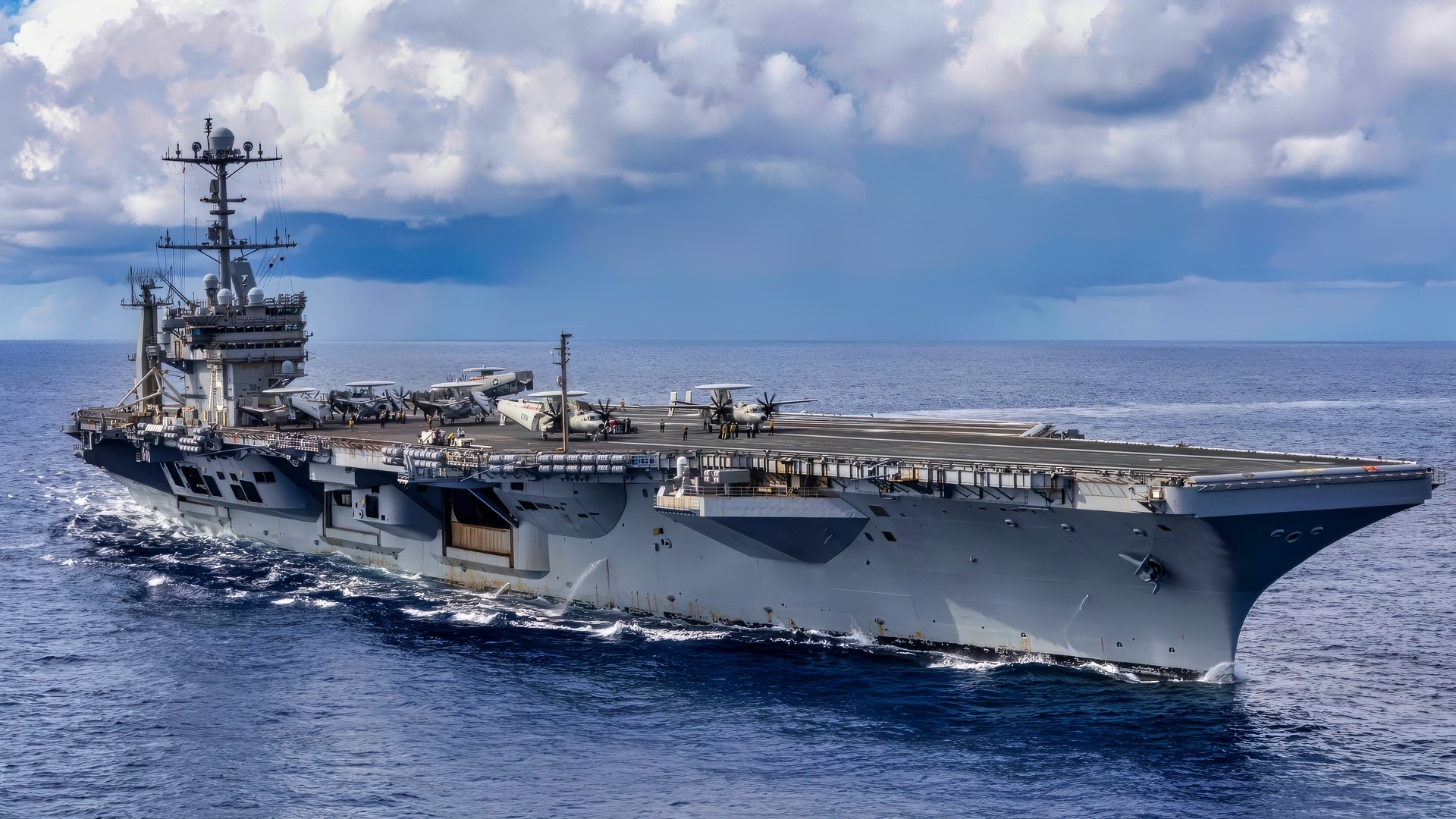Key Points and Summary – Eight months after a collision with a cargo ship in February 2025, the aircraft carrier USS Harry S. Truman continues to operate with visible hull damage.
-The U.S. Navy has deferred full repairs until the ship’s scheduled mid-life Refueling and Complex Overhaul (RCOH), expected within the next year.

The U.S. Navy Gerald R. Ford–class aircraft carrier USS Gerald R. Ford (CVN-78) and the Nimitz-class aircraft carrier USS Harry S. Truman (CVN-75) underway in the Atlantic Ocean on 4 June 2020, marking the first time a Gerald R. Ford–class and a Nimitz-class aircraft carrier operated together underway.

250923-N-FY193-1405 ATLANTIC OCEAN (Sept. 23, 2025) The Nimitz-class aircraft carrier USS Harry S. Truman (CVN 75) conducts carrier qualifications in the Atlantic Ocean. Truman is currently underway carrying out routine operations that support the Navy’s commitment to readiness, innovation, and future fleet lethality. (U.S. Navy photo by Mass Communication Specialist 2nd Class Mike Shen)
-While the damage was deemed cosmetic, the decision to delay highlights a broader crisis in the U.S. naval industrial base, which is struggling with maintenance backlogs, shipyard bottlenecks, and budget constraints that strain the entire carrier fleet’s readiness at a time of growing global instability.
Why the Aircraft Carrier USS Harry S. Truman Won’t Be Repaired Just Yet
Eight months after a February collision with the merchant vessel M/V Besiktas-M, the U.S. Navy’s aircraft carrier USS Harry S. Truman (CVN-75) still shows visible hull damage – damage that the Navy has deferred fixing until the ship enters its next Refueling and Complex Overhaul (RCOH).
The decision to postpone the ship’s complete repairs reflects the challenges of maintaining these massive nuclear-powered carriers, as well as the industrial constraints that put pressure on the U.S. Navy.
The February Collision
On the night of February 12, 2025, around 11:46 pm local time, the USS Truman and the Turkish-flagged (but Panamanian-operated) cargo ship Beskitas-M collided in the Mediterranean Sea off the coast of Port Said, Egypt.
The carrier was transiting near the northern end of the Suez Canal region, reportedly waiting to reenter the Red Sea.
In a public statement, the U.S. Navy said that no injuries were sustained, that there was no flooding, and that the propulsion plants within the vessel were safe.
“The collision did not endanger the Harry S. Truman (CVN 75) as there are no reports of flooding or injuries,” the statement reads. “The propulsion plants are unaffected and in a safe and stable condition. The incident is under investigation.”
The damage was depicted as only cosmetic in nature and confined to the exterior, above the waterline.
According to published photographs and open-source imagery, the collision ruptured a sponson – a projection that extends from the side of a ship to provide stability, increase buoyancy, or serve as a mounting point for equipment.

(Sept. 23, 2025) The Nimitz-class aircraft carrier USS Harry S. Truman (CVN 75) conducts carrier qualifications in the Atlantic Ocean. Truman is currently underway carrying out routine operations that support the Navy’s commitment to readiness, innovation, and future fleet lethality. (U.S. Navy photo by Mass Communication Specialist 2nd Class Mike Shen)
The sponson that was ruptured was on the carrier’s starboard side, near an aircraft elevator. The collision penetrated the outer structural panels, exposing the interior. The cargo vessel also sustained damage, though less severely.
Within days, Truman diverted to Souda Bay, Crete, to undergo Emergent Repair Availability (ERAV) – a kind of unplanned and short-term repair necessary after a collision.
Following the short-term maintenance and an assessment, the ship resumed routine operations in the Mediterranean around a week later.
But in the weeks that followed, the carrier’s commanding officer, Captain Dave Snowerden, was relieved of his command – reportedly due to loss of confidence over his decision-making related to the collision.
Why Repairs Are Deferred
Despite the visible damage, the Navy has elected not to conduct complete hull restoration in the short term.
Instead, officials say that the exterior cosmetic repairs will only be addressed when Truman enters its RCOH at Norfolk’s Newport News Shipbuilding facility.
An RCOH is the mid-life overhaul for nuclear aircraft carriers that includes refueling the two nuclear reactors.
It also includes comprehensive structural repairs, system modernization, and upgrades across all aspects, from propulsion to combat systems.
And because these overhauls are scheduled only once over a carrier’s roughly 50-year life, the Navy often defers lower-priority cosmetic or structural repairs until this window.
Official sources have indicated that Truman’s RCOH is expected to begin sometime within the next 12 months, meaning moving the ship to a shipyard to undergo repairs at this time would not only make little sense, but may not even be possible based on industrial capacity.
During the 250th Navy anniversary event held aboard Truman in October 2025, the damaged area was partially concealed by gray paint and a large Navy banner.
Deeper Troubles?
While deferring cosmetic repairs is standard, the decision to delay repair work also reflects some strain in the U.S. naval maintenance and repair, specifically about shipyard and industrial capacity.
The U.S. Navy is also battling maintenance backlogs, deferred depot work, and budget constraints.
Those maintenance backlogs have been estimated at $1.7 billion, with roughly $100 million attributable to carriers.
According to a Government Accountability Office (GAO) report from May 2022, the Navy has historically deferred depot maintenance as a result of operational demands and shipyard bottlenecks – meaning the ships need to stay at sea, and the shipyards couldn’t handle the repairs anyway.
Moreover, a recent GAO survey found many Navy ships depart port lacking 35% of required spare parts, with chronic manpower and training shortfalls compounding the problem.
These pressures have raised the risk that damage repairs will be deferred – and that even non-critical repairs could eventually compound over time, degrading survivability and putting pressure on fleets.
The USS Truman’s story represents a broader crisis in naval maintenance capacity – and more must be done to address it. Without congressional funding and private-sector support to expand shipyard infrastructure, these bottlenecks will persist.
And in persisting, they will delay readiness, compound repair costs, and threaten the long-term viability of the U.S. carrier fleet at a time of growing global unrest and diplomatic crises.
About the Author:
Jack Buckby is a British author, counter-extremism researcher, and journalist based in New York. Reporting on the U.K., Europe, and the U.S., he works to analyze and understand left-wing and right-wing radicalization, and reports on Western governments’ approaches to the pressing issues of today. His books and research papers explore these themes and propose pragmatic solutions to our increasingly polarized society. His latest book is The Truth Teller: RFK Jr. and the Case for a Post-Partisan Presidency.
More Military
The U.S. Army’s Big M10 Booker ‘Light Tank’ Mistake Still Stings
The U.S. Navy Built Two Versions of the Littoral Combat Ship. Both Were a Mess.
The EA-18G Growler Has A Message for the U.S. Navy
Warship Goes Down Below the Waves: Navy F/A-18F Fighter Fires A Stealth Munition










